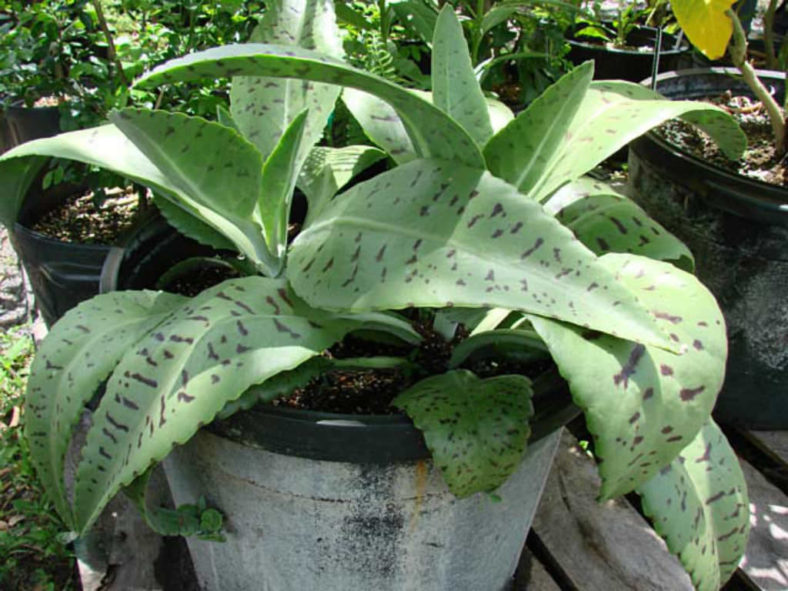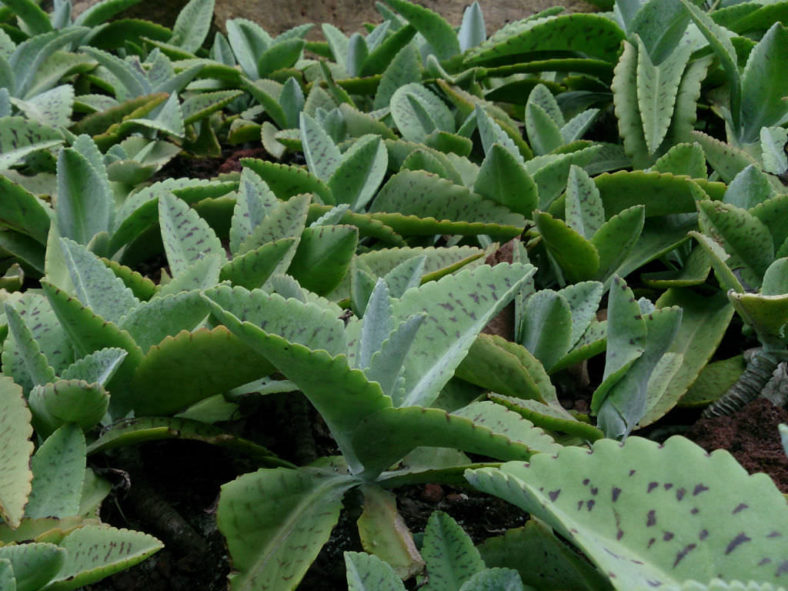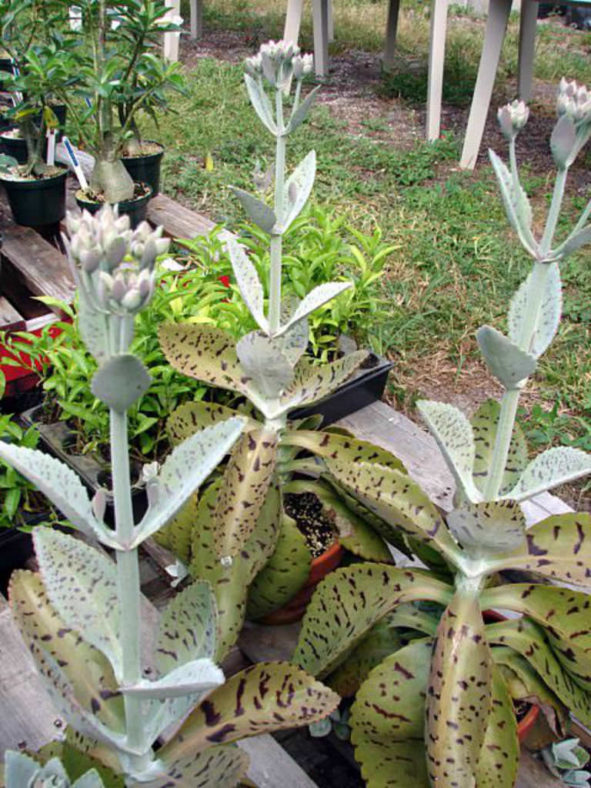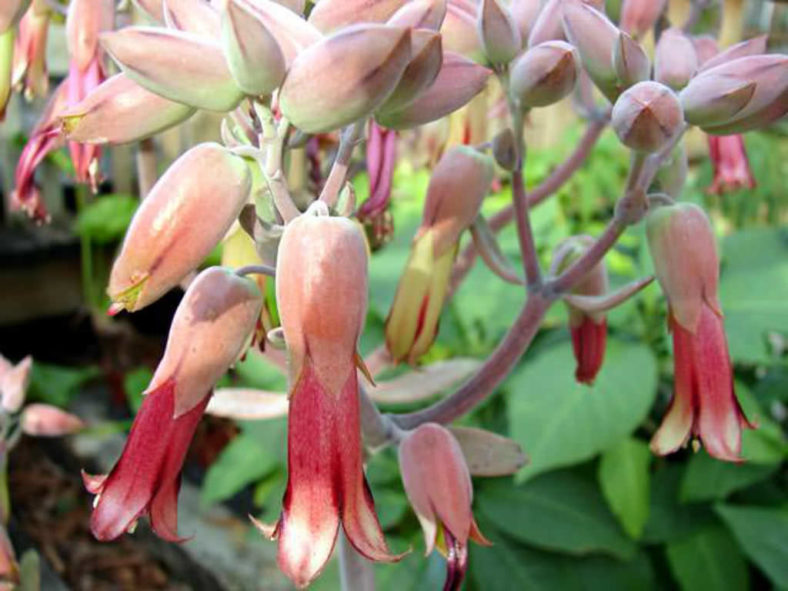Scientific Name
Kalanchoe gastonis-bonnieri Raym.-Hamet & H. Perrier
Common Name(s)
Donkey Ears, Giant Kalanchoe, Good Luck Leaf, Leaf of Life, Miracle Leaf, Palm Beachbells, Sprouting Leaf, Sprout-leaf Plant, Tree of Life
Synonym(s)
Bryophyllum gastonis-bonnieri, Kalanchoe adolphi-engleri, Kalanchoe gastonis-bonnieri var. ankaizinensis, Kalanchoe gastonis-bonnieri var. gastonis-bonnieri
Scientific Classification
Family: Crassulaceae
Subfamily: Sedoideae
Tribe: Kalanchoeae
Genus: Kalanchoe
Etymology
The specific epithet "gastonis-bonnieri" (pronounced "gas-TON bon-nee-ER-ee") honors Gaston Bonnier (1853-1922), a French botanist and plant ecologist.
Origin
Kalanchoe gastonis-bonnieri is native to northwestern Madagascar. It grows in rocky areas.
Description
Kalanchoe gastonis-bonnieri is a fast-growing perennial or sometimes biennial succulent that forms rosettes of green or gray-green leaves with maroon or dark green blotches. The stems are erect, usually very short, and branched only at the base. The leaves are ovate-lanceolate, measuring up to 20 inches (50 cm) in length and 4 inches (10 cm) in width, with irregularly scalloped margins, and are attached to the stem by a broad petiole that can grow up to 2.6 inches (6.5 cm) long. They often have small plantlets developing along the margins.
The flowers are cylindrical, finely hairy, yellow-green with red or violet lines, and can reach a length of 1.2 inches (3 cm). They appear in the fall, clustered on a tall stalk that branches near the top, which can grow up to 3 feet (90 cm) tall.

How to Grow and Care of Kalanchoe gastonis-bonnieri
Hardiness: USDA hardiness zones 9a to 11b: from 20°F (-6.7°C) to 50°F (10°C).
Kalanchoe care is minimal, but be cautious about light levels. Intense sunlight can burn the tips of the leaves, so place pots in partial sun to light shade areas when growing Kalanchoes.
The flowering varieties are highly rewarding for their colorful and long-lasting flowers. They prefer bright, sunny locations, especially in the growing season. Water moderately from fall to winter when the growth is most active. Reduce watering during the hottest summer months when the plants are mostly dormant and winter when the growth slows significantly. Let the soil surface dry out between waterings. Watch the fleshy leaves for signs of water distress. An ordinary potting soil mix is fine. Feed bi-weekly during the growing season with a liquid fertilizer, or use slow-release pellets.
These small plants require repotting every few years. When repotting, take additional care in handling, as the leaves are somewhat brittle and can snap easily. Clay pots work exceptionally well for planting Kalanchoes. Ensure pots drain well and saucers empty easily.
Learn more at How to Grow and Care for Kalanchoe.
Links
- Back to genus Kalanchoe
- Succupedia: Browse succulents by Scientific Name, Common Name, Genus, Family, USDA Hardiness Zone, Origin, or cacti by Genus
Photo Gallery
Click on a photo to see a larger version.


